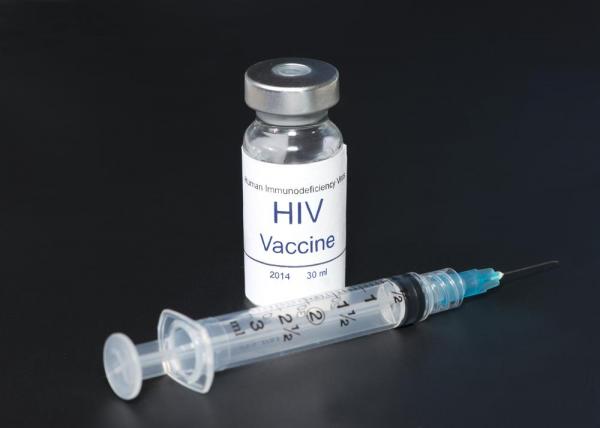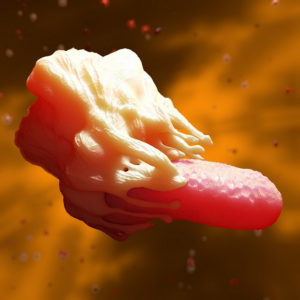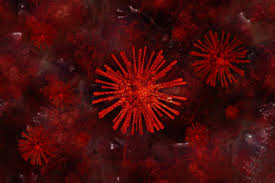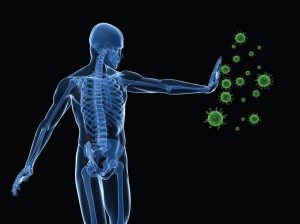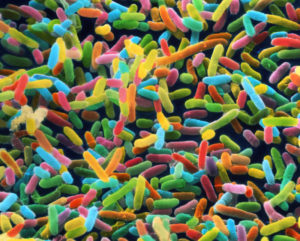Editor’s summary
During replication, RNA viruses frequently generate defective particles that parasitize and interfere with the replication and packaging of intact virus. Such defective particles may also stimulate host immune responses. Pitchai et al. developed a continuous culture method in which deletions were cloned into HIV to generate therapeutic interfering particles (TIPs). First, they showed that transduction-competent viral-like particles were produced conditionally in trans with intact HIV and reduced HIV load. Sequencing did not detect subsequent large deletions or rearrangements. Engineered TIPS were then tested with one injected dose in donated HIV-infected human cells, humanized mice, and nonhuman primates infected with HIV. These experiments verified seroconversion, suppression of HIV replication, and TIP persistence for at least 30 weeks. —Caroline Ash
Structured Abstract
INTRODUCTION
Rapidly evolving communicable pathogens, such as HIV, pose stubborn problems for conventional medical countermeasures. Because of substantial viral genetic diversity, there is no approved HIV vaccine. Although combination antiretroviral therapy (ART) is effective, ART is not curative and must be continually administered (discontinuation results in viral rebound), leading to major logistical challenges. Thus, despite decades of intense research, 1 to 2 million new HIV infections occur each year, with the virus overly impacting underprivileged and underserved communities. New antiviral strategies with reduced administration frequencies and high genetic barriers to the evolution of resistance are needed.
RATIONALE
Theories proposed decades ago predicted that HIV viral-deletion variants—based on the historical concept of defective interfering particles (DIPs), which parasitize wild-type viruses—could act as therapeutics. Putative therapeutic interfering particles (TIPs), a subset of DIPs, if rationally engineered to conditionally replicate with a basic reproductive ratio R0 > 1, were predicted to be single-administration, escape-resistant antiviral therapies. Notably, the R0 > 1 conditional replication criterion imparts TIPs with the potential to act as single-dose “drive” therapeutics, thereby overcoming extant therapy barriers. In this work, we developed a TIP for HIV.
RESULTS
Theory-driven in vitro studies showed that long-term HIV-infected bioreactors exhibited von Magnus—like oscillations (a signature of DIPs) and revealed a variant with a ~2.5-kb deletion in the HIV pol–vpr region. The deletion variant satisfied the requirements for a DIP. By introducing additional deletions to ablate splicing and eliminate expression from all HIV reading frames and repairing the HIV central polypurine tract, the DIP was engineered into an R0 > 1 TIP that durably suppressed HIV replication in vitro and in humanized mice. The TIP also established latency and suppressed HIV rebound or outgrowthin vitro, including from patient cells, and after interruption of antiretroviral therapy. To test TIP efficacy in a physiological model, an analog TIP lentiviral vector was constructed for SIV. Infant rhesus macaques were administered the SIV TIP by a single intravenous (IV) injection, challenged with a highly pathogenic SHIV (SF162P3) through the IV route (24 hours later), and followed for ~30 weeks. TIP intervention durably suppressed SHIV viral load by 4log10 in plasma and lymph tissue and resulted in significant reduction in disease. As predicted, TIPs conditionally replicated in vivo for >6 months, and TIP-treated animals exhibited significantly improved immune responses, and no evidence of increased inflammation. Full-length sequencing of SHIV revealed no evidence of increased evolution, recombination, or escape.
CONCLUSION
Epidemiological analyses argue that each 1log reduction in HIV viral load results in significant delays in the onset of AIDS and significant reductions in transmission potential. Theories have proposed that R0 > 1 TIPs have the capacity to establish coevolutionary arms races with wild-type viruses, leading to extraordinarily high genetic barriers to the evolution of antiviral resistance. On the basis of TIP intervention in SHIV-infected rhesus macaques, mathematical modeling indicates that a single dose of TIPs could durably reduce HIV viral load to less than the World Health Organization threshold for HIV transmission of 103 copies/ml. These data suggest that TIPs could serve as the foundation for a new class of easy-to-administer, single-administration antiviral “drive” therapies.
Abstract
Antiviral therapies with reduced frequencies of administration and high barriers to resistance remain a major goal. For HIV, theories have proposed that viral-deletion variants, which conditionally replicate with a basic reproductive ratio [R0] > 1 (termed “therapeutic interfering particles” or “TIPs”), could parasitize wild-type virus to constitute single-administration, escape-resistant antiviral therapies. We report the engineering of a TIP that, in rhesus macaques, reduces viremia of a highly pathogenic model of HIV by >3log10 following a single intravenous injection. Animal lifespan was significantly extended, TIPs conditionally replicated and were continually detected for >6 months, and sequencing data showed no evidence of viral escape. A single TIP injection also suppressed virus replication in humanized mice and cells from persons living with HIV. These data provide proof of concept for a potential new class of single-administration antiviral therapies.

